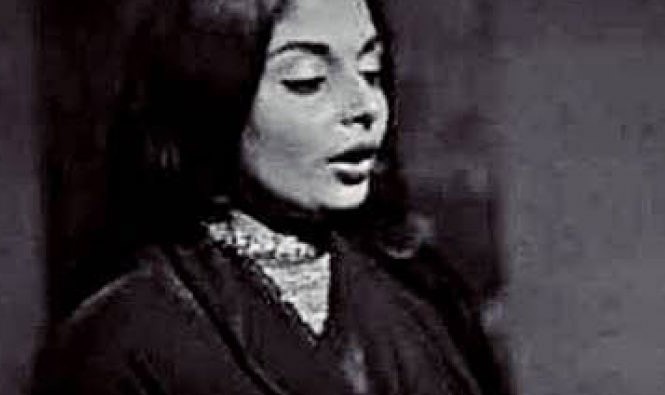
Shahnaz Begum’s most iconic song raises questions about the relationship between patriotism and art

Shahnaz Begum who died last week in Bangladesh is remembered for the patriotic songs that she sang in united Pakistan. Even the tributes that followed in the now Pakistan, after her death, pointed to those very songs that were praised and appreciated not only for their music but also for the patriotic fervour that they seemed to have aroused.
From the media reports, one gathered she also sang patriotic songs in Bangla after the creation of Bangladesh, and those too were hugely popular. Many thought that much frontal tackling of a patriotic theme had not been carried out earlier in Bengali music.
Tagore wrote and celebrated Bengali nationalism in poetry and music but that was couched in a much larger perspective so as not to be called exclusively patriotic. And then talking of the topic generally, what does "sare jahan say acha hindustan hamara" mean if seen in the narrower context of patriotism linked to territory, and how should we view those celebrated visual artists who painted Radha and Krishan but switched to calligraphy and miniature such as Maani and Behzad after 1947.
But what relationship does patriotic fervour have with the person of the artiste. Shahnaz Begum left Pakistan and settled in Bangladesh, where she hailed from, and died there after living a full life.
Bangladesh was East Pakistan till December 16, 1971, and horror of horrors it declared independence from Pakistan and after a civil war in which outside powers also intervened, declared itself free of shackles, emerging as a sovereign country. Pakistan, in other words, broke into two from within, the rest still insisted on calling itself Pakistan.
So, what was Shahnaz Begum singing about? Patriotism, or the idea of patriotism or its value as it exists in the abstract. For if she had really meant what she sang literally, she should have stayed back in Pakistan cherishing what she has melodiously rendered. Since she left the country Pakistan, it can be construed that she was singing what she did not mean to sing.
This can be understood by the enigmatic relationship of artistes with something that is tangible and can be realised in the here and now. That it is attainable and within grasp, a prize that needs to be won at the end has always left artistes in grief and a sorry state.
One of the pet themes these days is to sing paeans to the country, which plainly speaking is a piece of territory. Its praises are sung and its value exaggerated, its importance bloated and placed even above human life. Often this cliché is mouthed in our everyday life, and on the media, at all tiers and by the leadership in particular. For the sake of a piece of territory human life is an inexpensive price to pay.
This raises many questions and challenges many assumptions that laypeople have about the arts, its role, the relationship of art with the one who created it and the many purposes it can be put to by those who consume it from the outside.
One general understanding about artistes or particularly about musicians is that they are basically craftspeople who are paid to do a task. They do not have a commitment of their own but only sing to the hymn sheet provided to them. This cynical viewpoint has been promoted by keeping the histories of famous musicians in mind. But then why only musicians? Poets and painters too have been hankering after patronage, ingratiating the pleasure of the patron, considering it to be indispensable.
But then art is never one-dimensional and is therefore not subject to one reading but opens or yields itself to many interpretations and layers. It carries the burden of the metaphor that can be handled and exposed in more ways than one.
To link what the artiste is saying or doing to any definable entity is ridden with fallacy. What is it that the poet or the musicians yearns for? It could be something that lies in the realm of the possible and may not really be attainable in the here and now. It could be an idealised form that beckons, or a dream that needs an interpretation to be experienced in its immediacy.
Shahnaz Begum should have stayed back in the new Pakistan for, as one knows, there was no legal compulsion to move out of the limits of West Pakistan for the citizens of united Pakistan after 1971. Shahnaz Begum could be singing about a reference point, an ideal, and a habitation that should exist here but did not. It is about people that are placeholders for an ultimate human value and not really about the sanctity of the geographical unit or a system enclosed in definitiveness that needed to be rendered in melody. The smell, the fragrance, the colour, the ethos and then the locale can either be ends in themselves or just metaphors to point to some other higher reality, option or state.
All artistes who have built their castles on the outcome of a particular ideology or a self-certain truth found out that it was only sand that they were dealing with as the essential ingredient for its material realisation. Similarly, all that can be quantified in terms of a system can also come to grief, as it has been seen to happen.